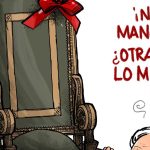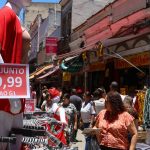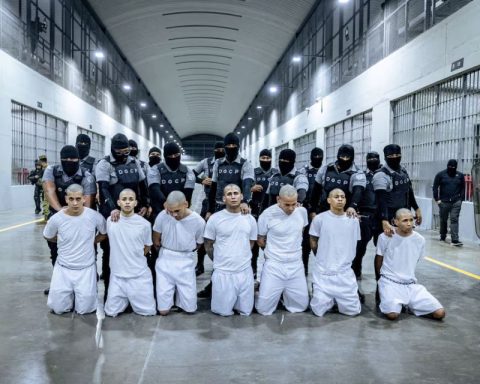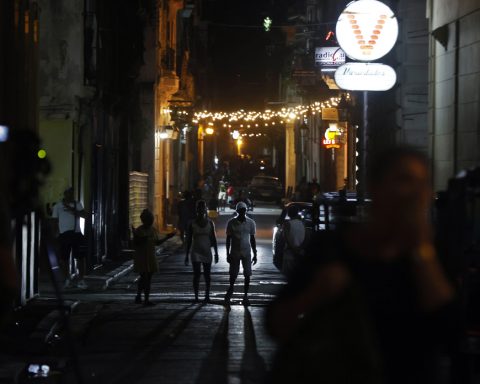There is residents of Montevideo who “make ends meet” thanks to the pay of the narcos. There are baby soccer clubs in Casavalle that practice with balls donated by the drug traffickers. There are educational centers that receive supplies purchased by drug traffickers. There are young people from the capital who earn a few pesos doing “campaign” for the drug traffickers. There are drug traffickers who buy silence.
This is confirmed by the investigation “In the cracks of the State: criminal governance in Montevideo”, from the Department of Political Science of the University of the Republic (Udelar). Because the exercise of power —especially in the neighborhoods located in the center and on the outskirts of the city— goes beyond explicit violence, murders or the subliminal messages behind the dismembered ones that occupy news headlines.
“When a gang controls the territory, it does not use the violent method, the one that is used more frequently when it is in competition, but deploys more ‘benevolent’ measures associated with power and the purchase of silence: They offer housing to the neighbors, help them pay for electricity, donate shirts or ballsfood and they employ young men in the drug market —as delivery men, to monitor an area or to obtain information—”, explains Verónica Pérez Bentancur, a doctor in Political Science and one of those responsible for the investigation.
These practices —which seem to come out of The Godfather or the modus operandi of the Colombian Pablo Escobar—, says the study, have been widespread “for years” more than what is thought. because if well in Uruguay “criminal gangs have low levels of organization”although hooded men armed to the teeth are not seen driving around in 4x4s preventing the entry of the State as in Mexico, and although there are no killings of politicians, journalists and prosecutors as in Central America, “they handle certain money that allows them to nuclear collaborators and in the territory of influence” which in the Uruguayan capital includes at least 24 neighborhoods.
According to police data to which he accessed The Observerat least 49 criminal gangs are active in Montevideo and the metropolitan area. Each of these groups manages —by definition— a minimum of three drug outlets. And some of them —usually family clans— have around 25 mouths working.
The Udelar study, financed by the Sectoral Fund for Citizen Security and which uses a different research methodology from that of the Ministry of the Interior, reveals that “the phenomenon of criminal governance is relevant in Montevideo” and that “a significant number” of the residents (sometimes more than 20%) have seen gangs make donations, offer work, evict neighbors or threaten them.
Violent methods tend to occur when an economic territory is in dispute, or when there is a forced split of a gang, or when there is a betrayal (a buchón, the lack of money or weapons). Violence is what the gangs resort to to keep the market running, given the impossibility –because it is illegal– of resorting to the Justice or regulated negotiation methods.
Ultimately it is a business. The drug mouth is just the tip of the iceberg where the supply is distributed. The gangs have to pay for security, to pay the person who keeps the drugs, the one who takes care of the money (in a different place from the drug), the one who watches over the weapons (in a different place than the previous two), and the What does intelligence do?
But that is only part of the “investment”: you have to pay the “tightening”, supply yourself by looking for wholesale purchases, improve the living conditions of the family, and exercise power in the neighborhood.
“That is why it is difficult for them to expand to other areas, that is why it is convenient for them to have peace and for their business to prosper”explained a police source.
A business with history
According to political scientist Pérez Bentancur, “micro-drug trafficking ends up being the business of criminals who recycle of another crime (scavengers, theft of cell phones, smuggling…)”. And the money at stake is not little.
In the northern Peruvian jungle, a kilo of base paste (with cocaine residue) costs between US$800 and US$1,000. Further south it starts to get more expensive. In Uruguay, criminal gangs usually buy them for US$4,500. But the money they obtain from the sale of the kilo exceeds US$ 19,000 (each dose costs about $75 and 10,000 doses are obtained from one kilo).
“It is a lot of money for humble areas where this type of drug is sold more, so families are tempted, children are excited to see drug traffickers in high-end cars, and so on…”, acknowledges the police source.
The business—and the strategies for maintaining power—isn’t new, but it changes over time.
Mario Layera, the last national director of Police under the administration of the Broad Front, recalls that “at the end of the 90s there was a well-known drug trafficker in Carmelo, who was called Lilo, who bought the painting for the local police station.”
At that time the distribution of the drug was mobile (dealers that they distributed by area) and not a fixed outlet.
The irruption of base paste in the 2000s and the economic crisis of 2002 changed the market. “The base paste began to be sold in fixed outlets that required security, surveillance, an arrangement with the neighborhood, that information not circulate…”, says Layera, who at that time worked in the anti-drug brigade.
“We began to see that collaborations with soccer clubs, with educational workshops in neighborhoods, and with neighbors became more frequent, to the point that micro-trafficking acquired a volume that began to be perceived by the population as insecurity and that ended up affecting , directly or indirectly, to entire housing complexes”, recalled the former police chief.
The growth of the business on a regional scale and the changes in strategy of the Police also mutated to micro-trafficking. A purchase-sale that is immersed in the neighborhoods and in which, the authorities understand, it is not only a matter of fighting the supply, but of re-educating the demand.
In this sense, the Udelar investigation concludes that “the deployment of social policies is key to avoiding the consolidation of criminal groups at the local level.” For its part, “the high presence of the State does not prevent the emergence of criminal organizations, but it does contain them and prevent them from expanding.”















